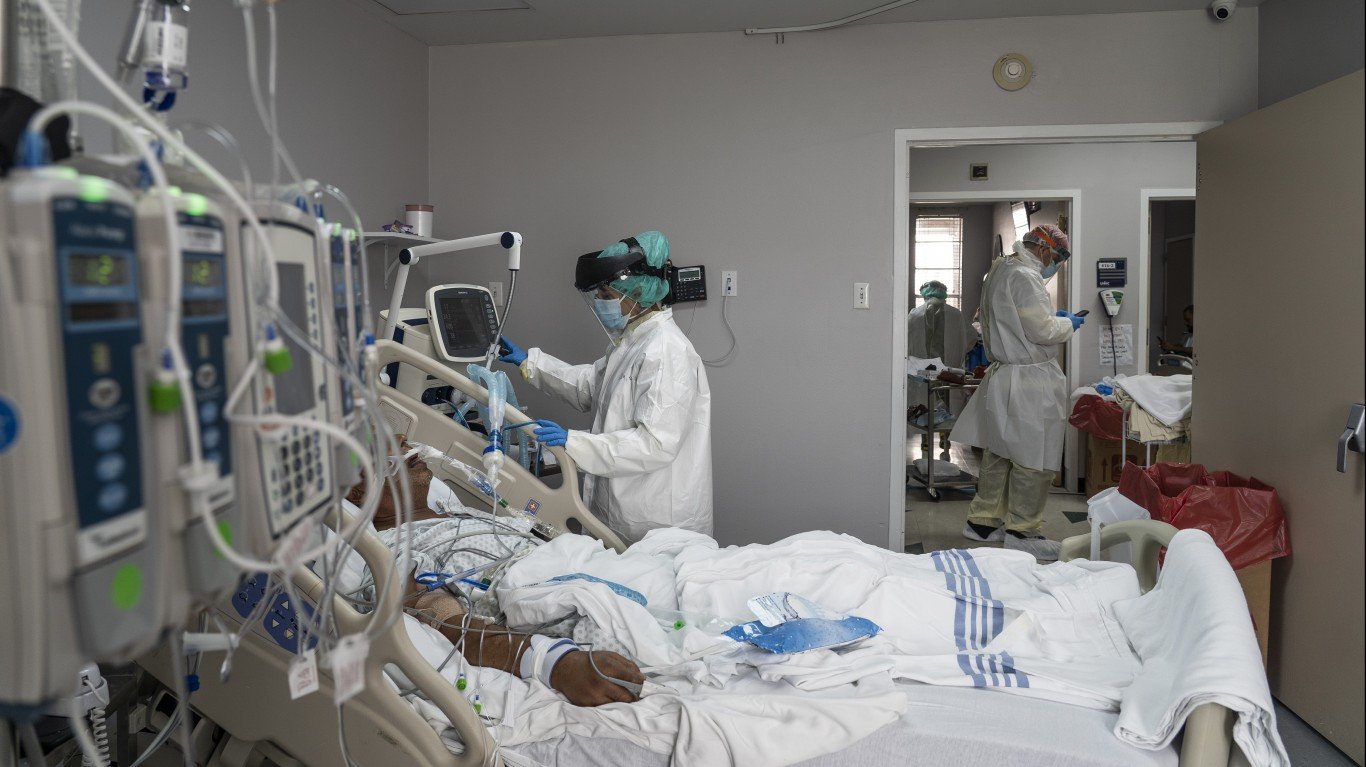

The rate of the spread of COVID-19 had slowed across America. Increases in daily fatal and confirmed cases are still about half what they were seven weeks ago. Nevertheless, 569,556 Americans have died as of Wednesday, which is about 20% of the world’s total. Confirmed cases have reached 31,608,403, or about 23% of the global number. Hospitalizations, which were over 100,000 a day during the peak wave, dropped into the thousands.
The Centers for Disease Control and Prevention (CDC) and several media sources show that the numbers of cases have started to rise again in well over half the states in America, currently led by a rapid spread in Michigan. That state recently asked the federal government for additional vaccine doses because of the rising spread of COVID-19 there. The request was denied, but the head of the CDC suggested the state be shut down to resolve the problem.
Much of the country has “opened up,” which has caused worries that there will be a fourth wave of the disease. Just two weeks ago, the nation’s newspapers were filled with reports of large college parties in Florida with hundreds of people in close proximity without masks. More people flew over the Easter weekend than any other weekend since the start of the pandemic. This kind of activity has led to public health officials predicting that fourth wave.
Variants of the disease are among the dangers epidemiologist and public health officials worry about. At least one, first identified in the United Kingdom, now accounts for most new U.S. cases. This variant also could be more deadly. The CDC currently tracks three variants for the public on its website. It has 20,915 cases of the B.1.1.7 variant reported across all 50 states, as of April 12. There were 453 cases reported of the B.1.351 variant across 36 states and 497 reported cases of the P.1 variant across 31 states. Several other variants have emerged that the CDC does not report on to the public.
The pace of the spread of the disease remains in part a race between vaccinations and the rising number of potentially dangerous variants. So far, 37% of the adult population has received at least one dose of vaccine and 23% are fully vaccinated. While the Pfizer and Moderna vaccines require two shots, the one from Johnson & Johnson requires just a single dose. According to The New York Times, 250,998,265 doses have been delivered in the United States and 194,791,836 of them (78%) have been administered.
COVID-19 hospitalizations hit staggering levels during the winter surge and hit critical levels in December. In some cities, particularly Los Angeles, intensive care units ran low on beds, which threatened the lives of those who most needed immediate treatment. Nationally, over 100,000 people were hospitalized with COVID-19.
The hospital capacity problem has begun again, primarily in several states where the disease is spreading quickly. The primary source of data used to determine this is the U.S. Department of Health & Human Services. It issues a report called “COVID-19 Reported Patient Impact and Hospital Capacity by State.” The most recent data are as of April 9.
One part of this report focuses on hospitals facing critical staffing shortages on the reporting date. The state facing the worst problem by this measure is Texas with 96 hospitals. California follows, and then Louisiana.
These are the five states with the most hospitals facing critical staffing shortages on the reporting date:
| State | Number |
|---|---|
| Texas | 96 |
| California | 65 |
| Louisiana | 42 |
| Oklahoma | 31 |
| Georgia | 28 |
Click here to see how many people have died from COVID-19 in each state.
Sponsored: Want to Retire Early? Here’s a Great First Step
Want retirement to come a few years earlier than you’d planned? Orare you ready to retire now, but want an extra set of eyes on your finances?
Now you can speak with up to 3 financial experts in your area for FREE. By simply clicking here you can begin to match with financial professionals who can help you build your plan to retire early. And the best part? The first conversation with them is free.
Click here to match with up to 3 financial pros who would be excited to help you make financial decisions.
Thank you for reading! Have some feedback for us?
Contact the 24/7 Wall St. editorial team.



